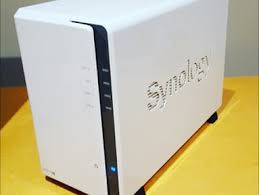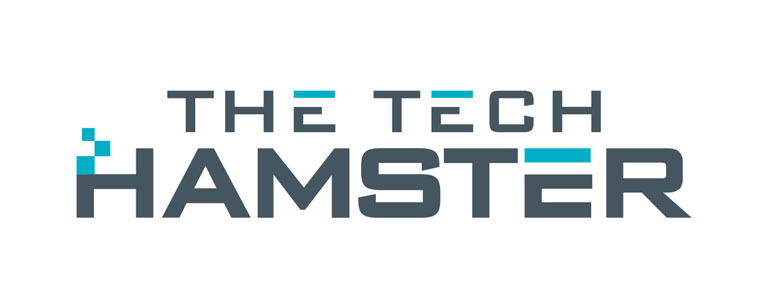Introduction
How to backup your computer is essential? Investing time and money into using your computer for work or hobbies means protecting your data from potential loss. In this article, we will explore why having a reliable backup solution is essential and how to set it up so that you can enjoy peace of mind.
We understand that data loss can occur in different ways, so we are committed to providing you with multi-pronged solutions that have been tried and tested. Neglecting computer backups can be costly, but we believe everyone can benefit from our recommendations.
Fortunately, modern technological advances make several simple options available to keep your data safe and secure. By copying important data to another location, you can ensure that you have a reliable backup solution in case of any unexpected issues.
Understanding the Need for Backups
Many things can happen to your data. The most common cause customers have requested of me is hacks or ransomware. There are, of course, other causes, such as hard drive failures. Both solid-state and mechanical drives can and do fail. They do not even need to fail completely. They can have bad blocks that affect the storage and integrity of your data.
A third common way data loss occurs is accidental deletion—an all-too-common issue that can catch you out. Computer Backups can protect you from yourself, too.
Types of Backups Explained
There are two main types of backups: System and Data backups.
System backups make complete copies of your drive and operating system. They can help recover your computer to a working state in case of a hard drive crash.
Data backups do just that: back up your data files in case you need some or all of them later.
Fortunately, plenty of software can do this for you. Your operating system will have a primary backup feature, and Windows will let you back up to OneDrive, Microsoft’s cloud storage system. Typically, using OneDrive’s features requires a subscription.
Cloud Storage as a Backup Solution
This option lets you sync your files across your computers and mobile devices. We already mentioned Microsoft’s OneDrive, but there are many others.
Google Drive, Apple’s iCloud, and Dropbox are some heavier ones. They often offer a couple of GB of storage for free and then charge a monthly fee to expand to suit your needs.
If this area interests you, shop around for the best $ per GB for the size of your data. Please plan ahead, however much you expect it to expand that year.
Online services are one of the fastest-growing sectors and are here to stay—they are a critical part of computer backup.
An interesting point to note here is that some providers charge per computer. This is an exciting model compared to most, who charge per GB of storage. Let’s take a look at the top providers you could choose.
| Cloud Service | Pricing |
|---|---|
| Backblaze | $6 per month per computer |
| Carbonite | $6 per month per computer |
| IDrive | $52.12 per year for 5TB of storage |
| Acronis | $49.99 per year for 250GB of storage |
| SpiderOak | $6 per month for 150GB of storage |
| Dropbox | $9.99 per month for 2TB of storage |
| Google Drive | $1.99 per month for 100GB of storage |
| Microsoft OneDrive | $1.99 per month for 100GB of storage |
Please note that pricing can be subject to change, so it’s always a good idea to visit the official websites of these cloud services for the most up-to-date information.
Automating Backups: Making Life Easier
You could use software to handle your computer’s backup for ease of use and consistency. Both Apple and Windows have built-in software backup options; connect some storage, and away you go. These might be fine for basic files, but it can be cumbersome to recover files later on.
There are more advanced options to back up your computer, such as I-Drive or Acronis True Image. This software is beneficial as it can automate your backups. Keep a set amount of full backups or data backups to fit your device’s backup device.
This device could be a plugin external drive, the second drive in your computer, or a home NAS drive.
Again, backup software can clone your entire system and now even include cloud storage that you can buy to get the best of all worlds.
Choosing Your Backup Destination
First, there are so many more options for placing your computer backup files. Some are easier to use, some cost more, and some are smaller and more portable.
External Drives
These are the most common file destinations. They are relatively cheap, come in all shapes and colors, and some have more advanced features. For example, drives may stream video files to your smart TV, and you can share them with others in your household to back up your files in one central place.
Optical Discs
Optical discs are a type of storage media that use lasers to read and write data. They are flat, circular discs made of a clear plastic material. There are different types of optical discs, such as CD (Compact Disc), DVD (Digital Versatile Disc), and Blu-ray disc. People are all too easy to dismiss optical storage, but they are very cheap and effective. Optical discs provide a convenient and reliable way to store and access digital content.
Some Blue drives are capable of writing to Millennium Discs, I recently purchased one myself as these special discs are made to last a very long time and be highly robust. Far Longer than Cloud or solid state drives will.
Optical discs have a high capacity and can store a large amount of data. They are commonly used for storing music, videos, software, and other digital content. To read or write data on an optical disc, a device called an optical disc drive is used. This device uses a laser beam to read the tiny pits and bumps on the disc’s surface, which represent the data.
Optical discs are portable and durable, making them a popular choice for data storage and distribution. However, they can be prone to scratches and damage, which may affect the usability of the disc.
USB / SSD / NAS
The last category in our roundup includes those likely to be widely used today. Memory-based solutions like SSD and USB flash drives are small and fast, but like all electronics, they are prone to failure. For this reason, it is wise to have more than one containing your data and store them in separate locations. I have found out the hard way these need to be replaced often.
Humidity and temperature also affect these storage devices; the above optical discs have a better tolerance range.
Our last but not least contender in this category is the NAS solution. These are tiny (about half the size of a shoebox) devices that hold mainly mechanical hard drives. These are often accessible over your network and can offer media streaming functions. Some also allow external access when sitting at that beach in Hawaii or busy at work. Some also provide cloud subscriptions to back up files there.
They are expensive and can be a security nightmare. For these reasons, there may be better choices for everyday people.

Determining Your Backup Frequency – How often should I back up my data?
Most home computer users don’t need up-to-the-minute data the way companies do. A schedule of once every two weeks or once a month would suit most casual users.
If your data changes frequently and is highly sensitive in nature, you may need to perform a weekly data backup. This brings us to the power users category. These are people with hobbies that may generate a lot of data, such as photography. Or you could do work for other people on the side and want to ensure you don’t lose valuable work.
Use the scheduling features of your backup software for any of your needs. This is where products such as Acronis True Image shine.
You set your backup schedule once, allowing you to enjoy the things you love to do with technology.
Best Practices for a Hassle-Free Backup Experience
You now have your backup software all set and have chosen the best storage option for your needs and data size.
Then, one day, something happens, and you need to restore; panic starts to settle in because you have missed one of the critical parts of your backup strategy.
TESTING that they are usable to get your files back.
A customer of mine had backups using the Windows Backup feature. He never tested those, and I had to manually extract all the photos he wanted from about 20 compressed files. This was time-consuming and very expensive for the customer.
An often overlooked aspect of software in general, and your backup software in particular, is updating it. Software can contain bugs that prevent it from working optimally. New features allowing more backup locations or device choices may also benefit you.
Backup testing is critical, as is having multiple locations for your files.
If you are backing up to a second M.2 Drive, you may also choose a cloud solution; having multiple locations is worth its weight in gold.
Conclusion: The Non-Negotiable Nature of Backups
The article explains the importance of backing up your computer data and provides a comprehensive guide on how to set up a reliable backup solution. It discusses the different types of backups – system and data backups – and explains how cloud storage can effectively be part of a backup solution. The article also provides a list of cloud backup providers and their fees. Lastly, it highlights the importance of automating backups and choosing the correct destination for backup files.
It is always possible to start backing up your files, and by following our tips and tricks of the trade, you’ll be a pro in no time. Having that peace of mind means you can concentrate on your technology and stop worrying about it.
